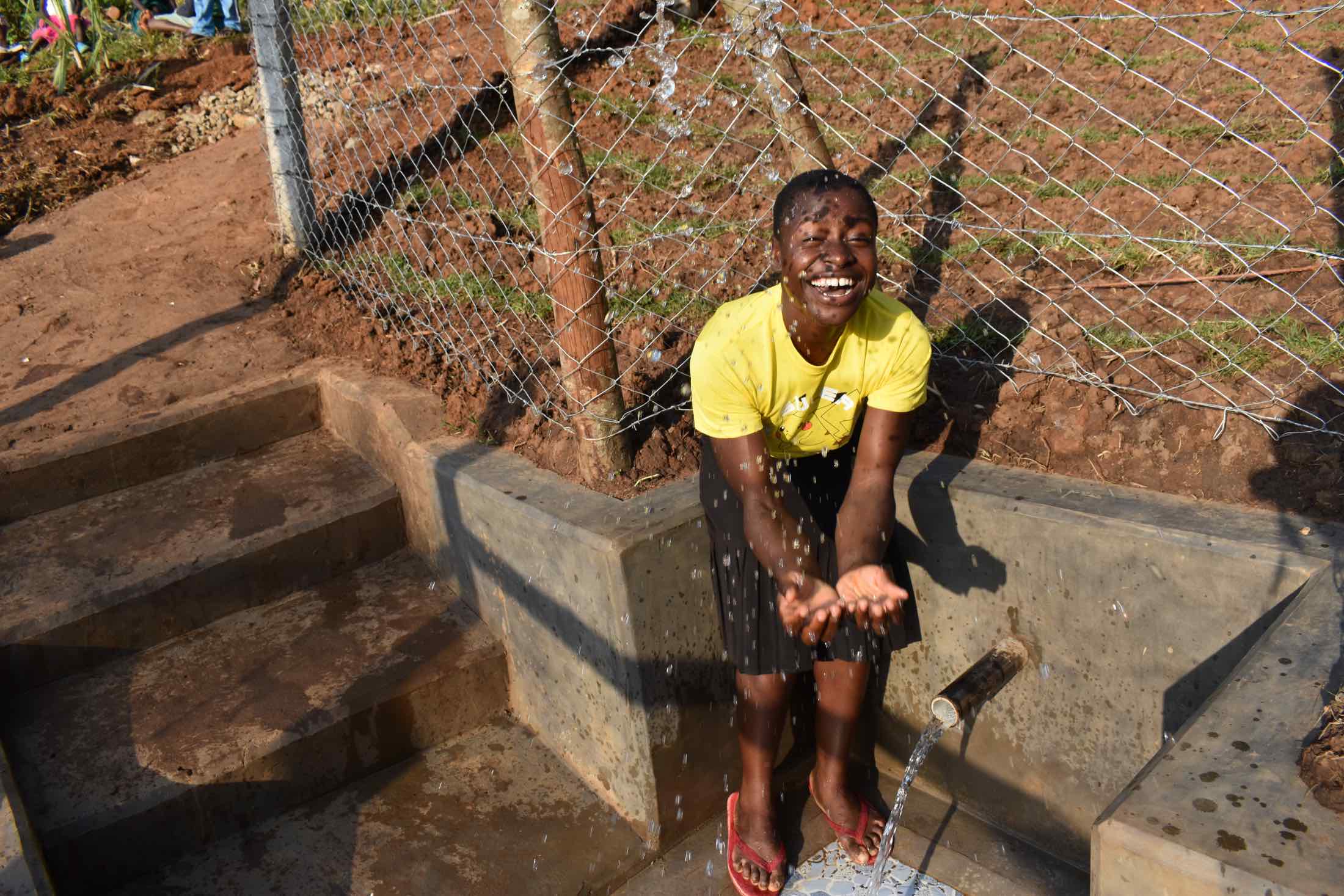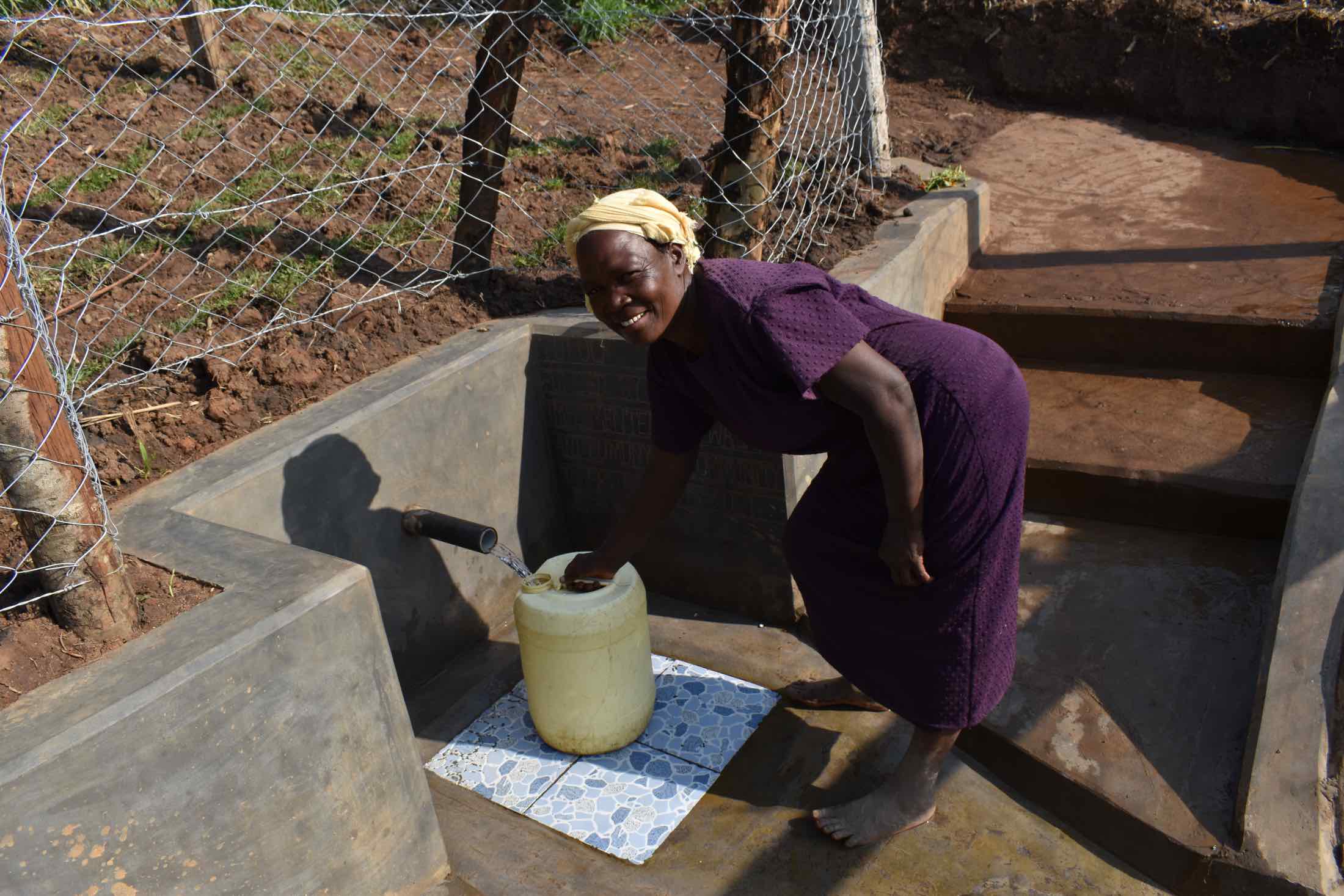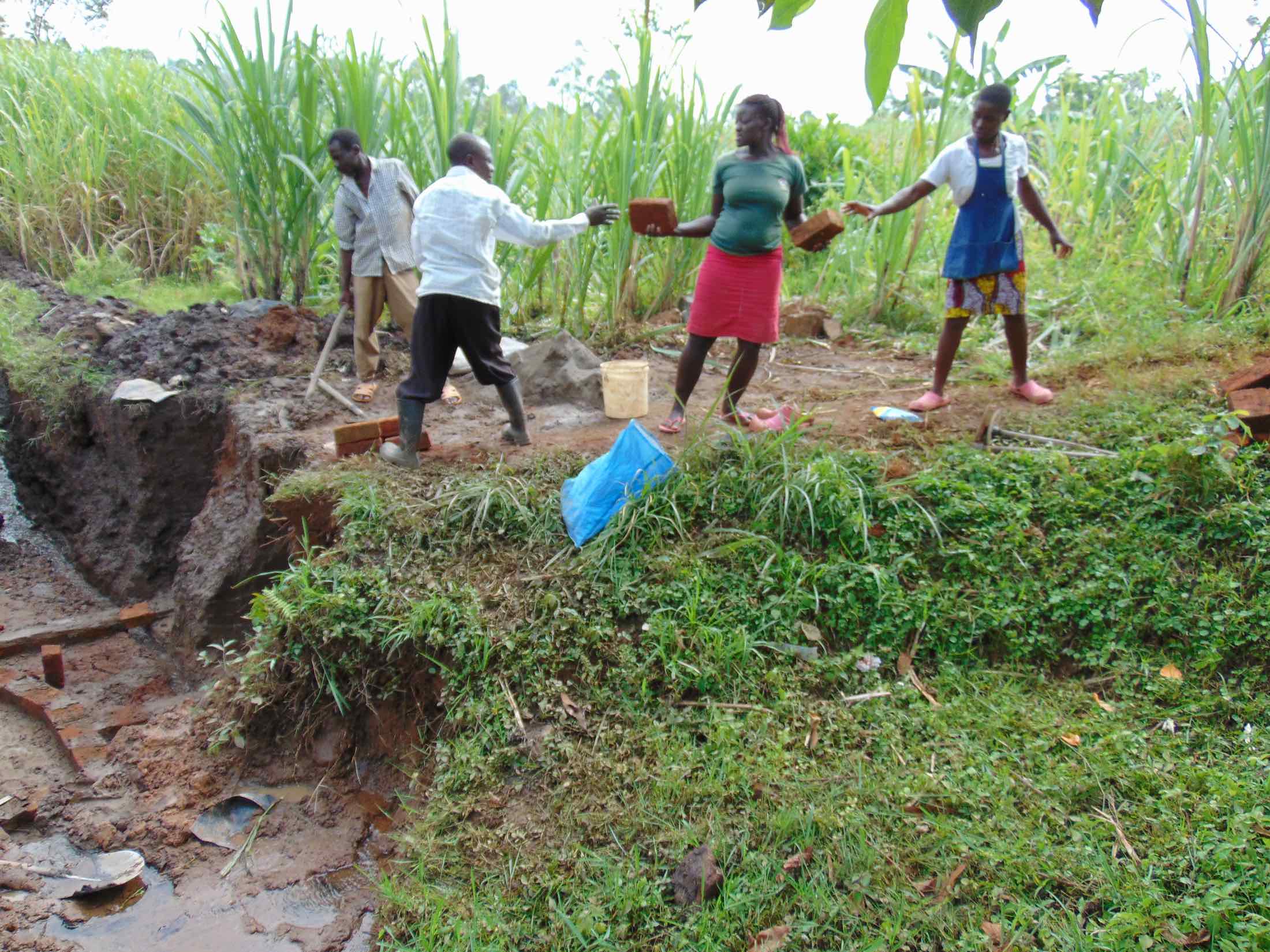Tubula Spring is located in the village of Lumunyasi, a peaceful and rural area. The land is predominantly vegetated with trees, grass, and community membres' crops including sugarcane, potatoes, arrowrots, bananas, and vegetables. Most houses are mud walled and iron sheet roofed with a few permanent buildings. Generally, the roads are inaccessible with vehicles during the rainy season. Only motorbike riders familiar with the area can sometimes dodge the washed out and muddy terrain. To get to the spring is no exception; one must walk through the sugar plantations and muddy paths to reach it.
152 people in Lumunyasi depend on Tubula Spring as their closest and only year-round water source. Women and children here have to make several trips to the spring to fetch water each day. Early int he morning, everyone tries to be the first at spring so that they can fetch the cleanest water possible of the day. After several fetchings, or if someone tries to fetch water too quickly, the water becomes dirty and everyone must wait for it to settle again for they can resume fetching it.
Tubula Spring looks like a medium sized puddle intersected by a few logs community members placed to offer a sort of bridge to stand on while fetching water. Since the logs are slippery and prone to turning, however, most people end up fetching water at the spring's edge anyway. Fetching water requires two containers: one small jug, bowl, or cup to scoop water up, and a larger jerrycan to fill with the scooped water.
This fetching process is time-consuming and imprecise; long lines and wait times are daily occurrences at the spring, sucking time away from community members' other daily activities and work. Mornings, evenings, weekends, and holidays are the busiest times at the spring. The time currently wasted at the spring could be time spent on other more productive or income-generating among community members. For children, they could be better spending their time playing or doing schoolwork.
Because it is completely open, multiple contaminants easily flow into the spring. Runoff from the rains carries farm chemicals, residues from animal waste, and soil directly into the pooled water. Sometimes there is so much washout that community members have to dig out the soil to access the spring again, followed by waiting for the water to settle. Animals can walk, drink, and defecate directly in the spring. Freshwater crabs, algae, insects, and rotting leaves all call Tubula Spring home.
Community members report that cases of diarrhea and typhoid are rampant in this area because of the consumption of the spring's dirty and unsafe water. Malaria is also common due to the stagnant water around the spring, which serves as a prime breeding ground for the mosquitoes that carry the disease.
"I have been praying to God to bring to us genuine people to protect our spring and I am glad our prayers have been answered. We have had people who come and promise to protect this spring only to disappear forever," said Rose Amukonyi, a 58-year-old farmer in Lumunyasi.
"My children, grandchildren, and I suffer from waterborne and water-related diseases like typhoid, diarrhea, malaria, and bilharzia frequently. We end up spending the little money we get on buying medication and hospital bills. I am eagerly waiting for this spring protection so that we can finally have clean and safe water."
Not only do these illnesses drain families of their financial resources, but they also keep adults home from work and kids home from school. Everyone's potential is being limited by the unprotected spring.
Accessibility is the other major concern at the spring. In addition to finding a tricky spot to perch at the water's edge while fetching, either on the logs or rocks, the area is slippery. Sometimes people's shoes and toes accidentally slip into the water, further contaminating it along with the scooping jugs they dip into the water.
"This water is dirty yet we have to drink it daily since we have no alternative source. Accessing the spring is difficult, especially when it rains; it gets slippery and sometimes I fall and hurt myself in the process," explained primary school-aged student Ernest.
What We Can Do:
Spring Protection
Protecting the spring will help provide access to cleaner and safer water and reduce the time people have to spend to fetch it. Construction will keep surface runoff and other contaminants out of the water. With the community’s high involvement in the process, there should be a good sense of responsibility and ownership for the new clean water source.
Fetching water is a task predominantly carried out by women and young girls. Protecting the spring and offering training and support will, therefore, help empower the female members of the community by freeing up more of their time and energy to engage and invest in income-generating activities and their education.
Training on Health, Hygiene, COVID-19, and More
To hold trainings during the pandemic, we work closely with both community leaders and the local government to approve small groups to attend training. We ask community leaders to invite a select yet representative group of people to attend training who will then act as ambassadors to the rest of the community to share what they learn. We also communicate our expectations of physical distancing and wearing masks for all who choose to attend.
The training will focus on improved hygiene, health, and sanitation habits in this community. We will also have a dedicated session on COVID-19 symptoms, transmission routes, and prevention best practices.
With the community’s input, we will identify key leverage points where they can alter their practices at the personal, household, and community levels to affect change. This training will help to ensure participants have the knowledge they need about healthy practices and their importance to make the most of their water point as soon as water is flowing.
Our team of facilitators will use a variety of methods to train community members. Some of these methods include participatory hygiene and sanitation transformation, asset-based community development, group discussions, handouts, and demonstrations at the spring.
One of the most important issues we plan to cover is the handling, storage, and treatment of water. Having a clean water source will be extremely helpful, but it is useless if water gets contaminated by the time it is consumed. We and the community strongly believe that all of these components will work together to improve living standards here, which will help to unlock the potential for these community members to live better, healthier lives.
We will then conduct a small series of follow-up trainings before transitioning to our regularly scheduled support visits throughout the year.
Training will result in the formation of a water user committee, elected by their peers, that will oversee the operations and maintenance of the spring. The committee will enforce proper behavior around the spring and delegate tasks that will help preserve the site, such as building a fence and digging proper drainage channels. The fence will keep out destructive animals and unwanted waste, and the drainage will keep the area’s mosquito population at a minimum.

 Protected Spring
Protected Spring
 Rehabilitation Project
Rehabilitation Project





































